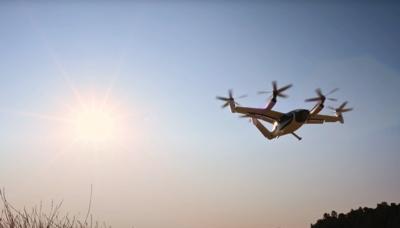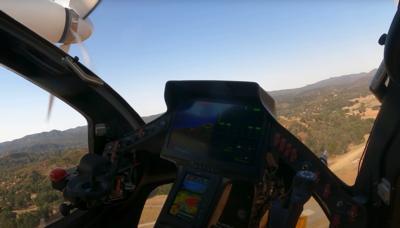Tue, Feb 22, 2022
EVTOL Manufacturer Suffers Setback in Certification Process, Can it Rebound?
Joby Aviation's flight test accident made waves after breaking the company's stride over recent months, marking the first real unscheduled problem for the eVTOL manufacturer.

The prototype in question has been said to be used for high-speed stability testing, a conjecture supported by flight tracking data showing a speed over 270 mph not long before the crash, a fair bit faster than its nominal top speed of 200 mph.
News broke of the incident after a mandatory SEC report was made saying as required by law to alert investors to unscheduled corporate events. The report was somewhat understandably vague, merely saying that "one of its remotely piloted, experimental prototype aircraft was involved in an accident during flight testing at our remote flight test base in California." The company recently caught the eye of some when their paperwork requesting approval for unmanned, remotely-piloted flights. Their decision to forego a pilot could well have saved a life in this instance.

Pulling some of the flight tracking data for the N-number registered to the company paints a likely picture of what was happening: Evaluation of their prototype at speeds beyond their anticipated maximum, required performance for certification. Those familiar with FAA certification recall that aircraft are required to be capable of flying at 1.3 times their stated top speed, which would put the aircraft's velocity right in the neighborhood of the requirement just before dropping off of tracking.
The requirement ensures aircraft are designed with a valuable safety buffer. Going 30% beyond a "never exceed" speed may not be as common in a multirotor VTOL aircraft, but it's still well within the realm of reason for standard operations in descents. The lessons learned by Joby will hopefully go towards keeping their second prototype in the air - an aircraft whose birth was fortuitously timed for this occasion. Joby only recently announced a second pre-production prototype aircraft to ensure the continuation of their work on certification.
More News
Airplane Bounced About 3 Ft Then Touched Back Down And Then, With No Brakes Applied, The Airplane Began Veering To The Left Analysis: The pilot entered the airport traffic pattern >[...]
Aero Linx: British Microlight Aircraft Association (BMAA) The primary focus within all aviation activity is SAFETY. In all aspects of our sport SAFETY must come first, whether it b>[...]
From SnF25 (YouTube Edition): William Wynne Builds Practical Aircraft Engines on the Corvair Platform Seeking an affordable alternative to the traditional aircraft engine options, >[...]
How To Get A Story On Aero-TV News/Feature Programming How do I submit a story idea or lead to Aero-TV? If you would like to submit a story idea or lead, please contact Jim Campbel>[...]
From 2023 (YouTube Edition): Bridge of CiES CiES Inc. is a Bend, Oregon-based designer and manufacturer of modular embedded aircraft systems and sensors. The company’s fuel-l>[...]
 NTSB Final Report: Aviat A1
NTSB Final Report: Aviat A1 ANN's Daily Aero-Linx (07.08.25)
ANN's Daily Aero-Linx (07.08.25) Classic Aero-TV: Fly Corvairs Reliable Engine Alternative
Classic Aero-TV: Fly Corvairs Reliable Engine Alternative ANN FAQ: Contributing To Aero-TV
ANN FAQ: Contributing To Aero-TV Classic Aero-TV: CiES Fuel-Quantity and e-Throttle Systems Praised
Classic Aero-TV: CiES Fuel-Quantity and e-Throttle Systems Praised




